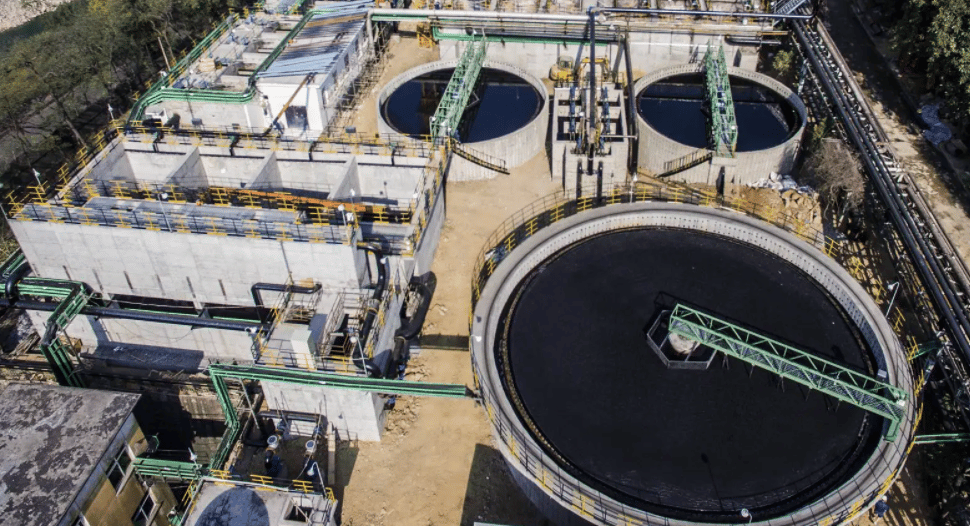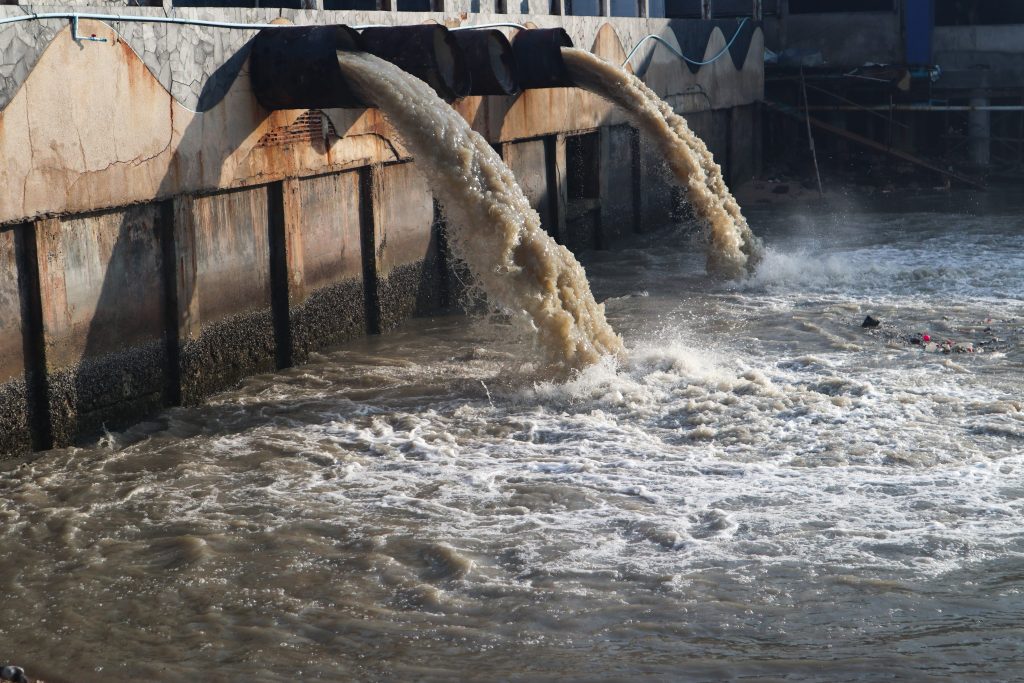Industrial Waste Water Treatment-- Industrial-Grade Water Purification and Filtering Solutions
Industrial Waste Water Treatment-- Industrial-Grade Water Purification and Filtering Solutions
Blog Article
Key Methods in Industrial Waste Water Treatment Processes
The treatment of commercial wastewater is a vital aspect of environmental monitoring, entailing a range of methods created to reduce the influence of contaminants. Developments in innovations such as membrane purification and advanced oxidation processes provide ingenious solutions for improving therapy efficiency.
Physical Therapy Approaches
How successfully can physical therapy approaches resolve the intricacies of industrial wastewater? Physical treatment techniques play an essential function in the preliminary phases of wastewater management, focusing primarily on the elimination of solids and large particulates. Methods such as sedimentation, purification, and flotation protection are vital for lowering the focus of suspended solids, therefore enhancing the performance of subsequent therapy processes.
Sedimentation involves the gravitational settling of solids, enabling the separation of heavier materials from the wastewater. This method is specifically reliable in clearing up water before chemical or organic therapies. Filtration, on the various other hand, utilizes different media to capture particle matter, making certain that smaller sized pollutants are eliminated. This method can be tailored to suit different sorts of commercial effluents, creating more clear effluent streams.
Additionally, flotation protection techniques, which make use of air bubbles to lift put on hold solids to the surface area for elimination, are efficient in dealing with wastewater with high concentrations of fats, oils, and oils. In general, physical treatment approaches act as a critical very first action in the comprehensive management of industrial wastewater, making sure that the lots on succeeding therapy stages is decreased and improving general treatment efficacy.
Chemical Treatment Methods
While physical treatment approaches lay the foundation for effective wastewater monitoring, chemical therapy methods are vital for dealing with the extra complicated pollutants often located in commercial effluents. These approaches make use of numerous chemical agents to speed up, reduce the effects of, or oxidize dangerous materials, guaranteeing a more detailed removal of contaminants.
One common technique is coagulation and flocculation, where chemical coagulants such as aluminum sulfate or ferric chloride are contributed to promote the aggregation of put on hold fragments. This process boosts solid-liquid separation, reducing turbidity and enhancing water high quality. Additionally, neutralization processes are used to adjust the pH of wastewater, making use of acids or bases to neutralize acidic or alkaline streams, respectively.
Oxidation-reduction responses play a critical function in degrading natural pollutants and pathogens. Chemical oxidants like chlorine, hydrogen, or ozone peroxide are made use of to damage down complicated natural compounds, making them less unsafe or much more eco-friendly. Progressed oxidation processes (AOPs) integrate multiple oxidation methods to enhance toxin removal performance.
Organic Treatment Procedures
The effectiveness of wastewater therapy is substantially improved by biological therapy procedures, which harness the all-natural metabolic activities of microorganisms to break down organic matter and remove toxins. Industrial Waste Water Treatment. These procedures primarily entail aerobic and anaerobic digestion, each tailored for specific sorts of wastewater
Cardiovascular therapy processes make use of oxygen to sustain microbial development, advertising the breakdown of natural pollutants right into carbon dioxide and water. Typical techniques consist of activated sludge systems, where oygenation tanks help with the blending of wastewater with microbes, and trickling filters, which urge biofilm development on media surface areas.
Conversely, anaerobic treatment processes occur in the absence of oxygen, using anaerobic germs to disintegrate natural matter, causing biogas manufacturing, a sustainable power resource. Anaerobic digesters are typically utilized in commercial setups for this objective, properly lowering the quantity of sludge while generating important biogas.
The option of an organic therapy technique depends upon wastewater characteristics, treatment goals, and regulative requirements. The assimilation of biological processes in wastewater treatment not only enhances toxin elimination performance but also promotes sustainability by minimizing chemical use and supporting resource recovery.
Advanced Oxidation Processes

Usual AOP strategies include Fenton's ozonation, photocatalysis, and reagent. Fenton's reagent, a mix of hydrogen peroxide and ferrous iron, catalyzes the formation of hydroxyl radicals, making it effective for dealing with wastewater including phenolic substances and other recalcitrant compounds. Ozonation makes use of ozone as a powerful oxidant, efficient in deteriorating a vast array of organic toxins while all at once disinfecting the effluent. Photocatalysis utilizes light-activated catalysts, such as titanium dioxide, to enhance oxidation responses and eliminate impurities.
AOPs provide a number of advantages, consisting of decreased sludge manufacturing and the ability to treat wastewater with high focus of organic pollutants. The application of AOPs needs careful consideration of operational specifications and cost-effectiveness, making certain that these sophisticated techniques useful link are suitably incorporated right into existing wastewater treatment systems.
Membrane Layer Filtration Technologies

Microfiltration is efficient for removing put on hold solids and bacteria, while ultrafiltration targets smaller sized natural molecules and infections. Nanofiltration bridges the space in between ultrafiltration and turn around osmosis, effectively getting rid of natural compounds and divalent ions. Reverse osmosis gives the highest degree of filtration, top article used mainly for desalination and getting rid of mono-valent ions.
Membrane layer technologies offer countless advantages, including low energy usage compared to traditional therapy methods, modular style for scalability, and the possibility for water recuperation and reuse. Difficulties such as membrane layer fouling and the requirement for routine maintenance should be addressed to guarantee system efficacy. Overall, membrane layer purification modern technologies represent a crucial element of contemporary commercial wastewater therapy methods, advertising sustainability and source preservation in water administration.
Final Thought
To conclude, industrial wastewater treatment employs a varied variety of methods, including physical, chemical, biological, and advanced methods. Each strategy plays a crucial function in effectively dealing with different contaminants, boosting water high quality, and promoting source sustainability. The combination of these methods fosters a thorough therapy approach, making sure that commercial effluents satisfy regulatory requirements while minimizing ecological impact. Proceeded improvements in these approaches will certainly even more boost the performance and efficiency of wastewater treatment processes click for more in commercial settings.
The treatment of industrial wastewater is a vital aspect of ecological monitoring, including a variety of methods designed to minimize the impact of pollutants.Just how successfully can physical treatment methods attend to the intricacies of commercial wastewater?Advanced oxidation processes (AOPs) represent a sophisticated approach in industrial wastewater treatment, developed to successfully break down natural toxins that are frequently resistant to traditional therapy techniques (Industrial Waste Water Treatment).In final thought, commercial wastewater therapy uses a varied selection of methods, consisting of physical, chemical, biological, and advanced techniques. Continued advancements in these methods will certainly additionally enhance the effectiveness and efficiency of wastewater therapy procedures in industrial settings
Report this page